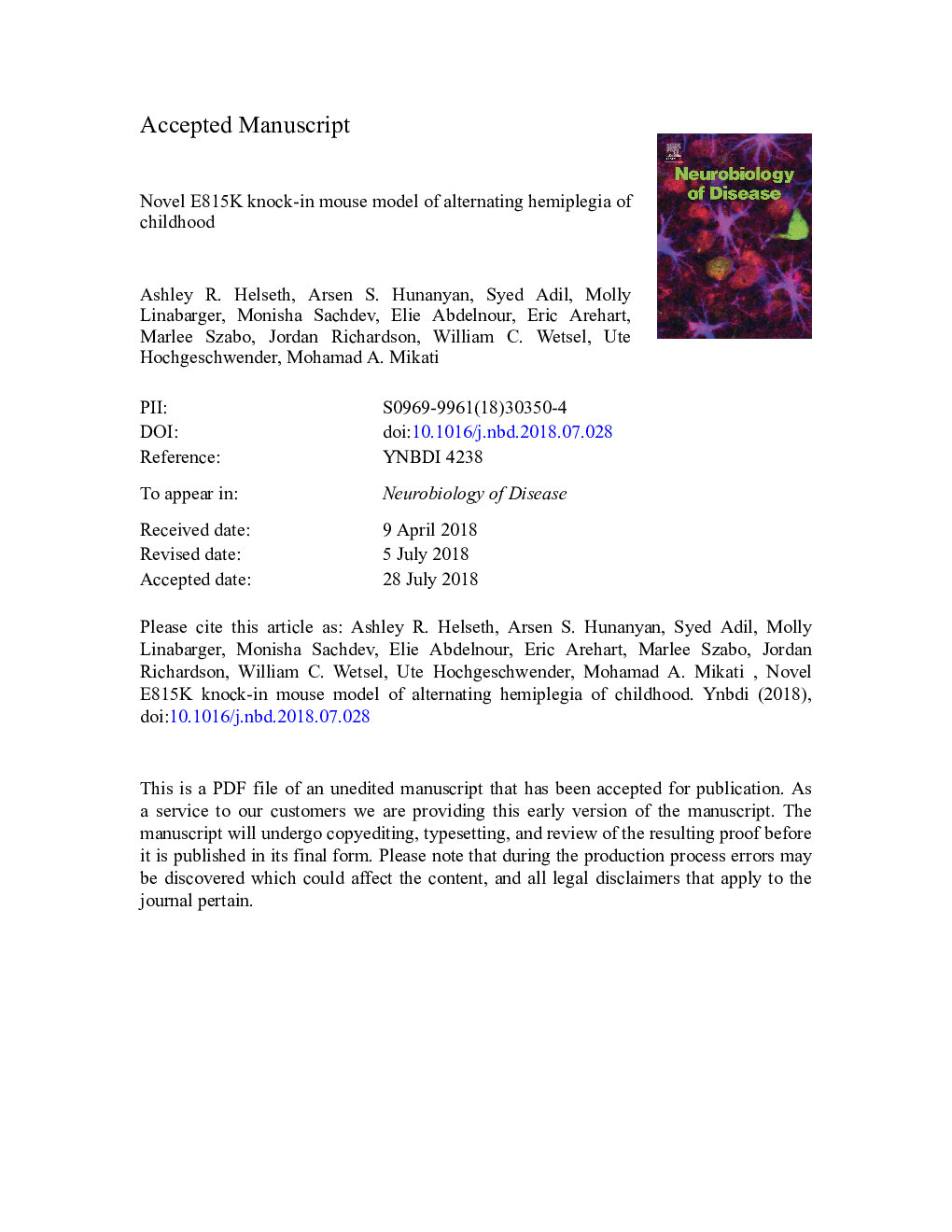| Article ID | Journal | Published Year | Pages | File Type |
|---|---|---|---|---|
| 8686297 | Neurobiology of Disease | 2018 | 42 Pages |
Abstract
De novo mutations causing dysfunction of the ATP1A3 gene, which encodes the α3 subunit of Na+/K+-ATPase pump expressed in neurons, result in alternating hemiplegia of childhood (AHC). AHC manifests as paroxysmal episodes of hemiplegia, dystonia, behavioral abnormalities, and seizures. The first aim of this study was to characterize a novel knock-in mouse model (Atp1a3E815K+/â, Matoub, Matb+/â) containing the E815K mutation of the Atp1a3 gene recognized as causing the most severe and second most common phenotype of AHC with increased morbidity and mortality as compared to other mutations. The second aim was to investigate the effects of flunarizine, currently the most effective drug used in AHC, to further validate our model and to help address a question with significant clinical implications that has not been addressed in prior studies. Specifically, many E815K patients have clinical decompensation and catastrophic regression after discontinuing flunarizine therapy; however, it is not known whether this is congruent with the natural course of the disease and is a result of withdrawal from an acute beneficial effect, withdrawal from a long-term protective effect or from a detrimental effect of prior flunarizine exposure. Our behavioral and neurophysiological testing demonstrated that Matb+/â mice express a phenotype that bears a strong resemblance to the E815K phenotype in AHC. In addition, these mice developed spontaneous seizures with high incidence of mortality and required fewer electrical stimulations to reach the kindled state as compared to wild-type littermates. Matb+/â mice treated acutely with flunarizine had reduction in hemiplegic attacks as compared with vehicle-treated mice. After withdrawal of flunarizine, Matb+/â mice that had received flunarizine did neither better nor worse, on behavioral tests, than those who had received vehicle. We conclude that: 1) Our mouse model containing the E815K mutation manifests clinical and neurophysiological features of the most severe form of AHC, 2) Flunarizine demonstrated acute anti-hemiplegic effects but not long-term beneficial or detrimental behavioral effects after it was stopped, and 3) The Matb+/â mouse model can be used to investigate the underlying pathophysiology of ATP1A3 dysfunction and the efficacy of potential treatments for AHC.
Keywords
Related Topics
Life Sciences
Neuroscience
Neurology
Authors
Ashley R. Helseth, Arsen S. Hunanyan, Syed Adil, Molly Linabarger, Monisha Sachdev, Elie Abdelnour, Eric Arehart, Marlee Szabo, Jordan Richardson, William C. Wetsel, Ute Hochgeschwender, Mohamad A. Mikati,
